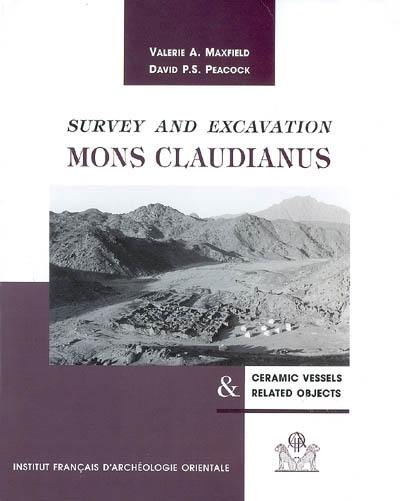
Fiche technique
Format : Broché
Nb de pages : XXII-450 pages
Poids : 2245 g
Dimensions : 25cm X 33cm
EAN : 9782724704280
Ceramic vessels & related objects
Quatrième de couverture
Mons Claudianus is the site of a major Roman quarry complex, situated in the Eastern Desert of Egypt. The quarries, which were operated as an imperial monopoly, produced a fine grey granodiorite which was used largely in prestige imperial building projects in Rome. Once abandoned by Rome, the settlement lay largely untouched, and in a superb state of preservation, until the advent of tourism on the Red Sea coast in the 1980s. Seven seasons of work conducted between 1987 and 1993, produced a detailed survey of the large quarry field and fortified settlement area, and excavations undertaken to elucidate the functioning and chronology of the site. Among the major aims was the construction of dated sequences for various classes of ceramic artefact, something that had been sadly lacking for the earlier centuries of the Roman period in Egypt but which is made possible at Mons Claudianus by the association of the ceramic materials with dated ostraca.
The high status of the site is reflected in the range of materials represented. This report provides a comprehensive account of the Egyptian and imported pottery and faience vessels, vessel stoppers, ceramic lamps and small objects. The report on the vessels includes a detailed description of fabric and forms, together with a dated catalogue. Quantified groups, ranging from the mid-first through the early third century AD, chart the ceramic trends through time, and are used to address broader issues, such as supply and demand, at the site. The report on the pottery lamps includes a comprehensive catalogue, and presents a new dated typology designed to be flexible enough to accommodate future discoveries, as well as fabric analysis designed to establish provenance. A typological analysis of 273 vessel stoppers with their inscriptions attempts to correlate stopper type with vessel contents, and from this draw broader conclusions about food supply to Mons Claudianus. Finally, the group of terracotta and plaster objects, though relatively small in number and fragmentary in condition, forms one of very few well-dated collections of these materials published from Graeco-Roman Egypt.





